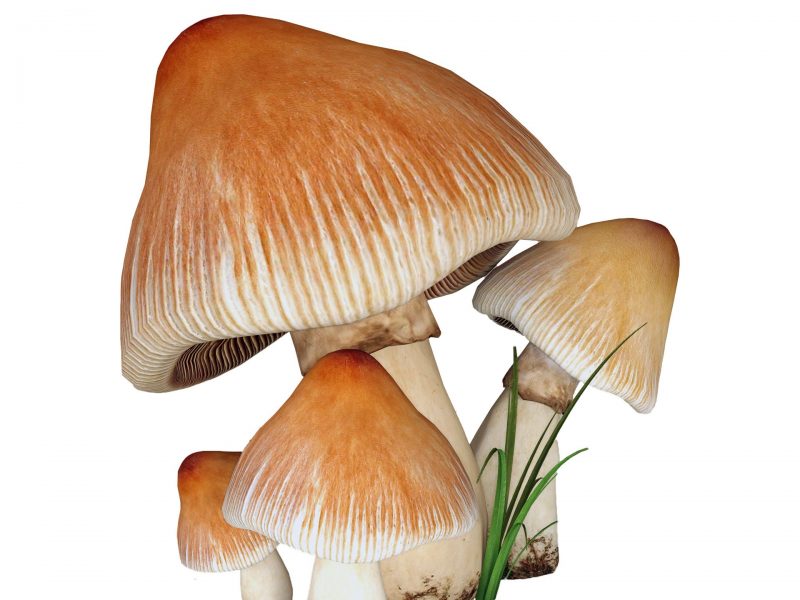New study discovers mushrooms can be as satiating as meat when protein levels are matched
If breakfast is the most important meal of the day, then mushrooms may be one of the most imperative ingredients. A new study on satiety published in the journal Appetite indicates that eating a mushroom-rich breakfast may result in less hunger and a greater feeling of fullness after the mushroom breakfast compared to the meat breakfast.
“Previous studies on mushrooms suggest that they can be more satiating than meat, but this effect had not been studied with protein-matched amounts until now,” said gut health and satiety researcher and study author Joanne Slavin, PhD, RD, professor at the University of Minnesota. “As with previous published research, this study indicates there may be both a nutritional and satiating benefit to either substituting mushrooms for meat in some meals or replacing some of the meat with mushrooms.”
Because protein appears to be the most satiating macronutrient according to the scientific literature , researchers wanted to match the amount of protein in the mushroom and meat interventions to essentially control for the influence of protein on satiety. After matching the mushroom and meat by protein content, both ended up containing comparable amounts of calories as well, which is a common way to match interventions in satiety studies.
“This new study adds to a growing body of evidence that suggests mushrooms may aid weight management and satiety, and thus contribute to overall wellness,” said Mary Jo Feeney, MS, RD, FADA and nutrition research coordinator to the Mushroom Council. “Consumers are interested in the benefits of protein food choices, so it’s important for them to know that plant-based sources of protein, such as mushrooms, can be satisfying.”
Mushrooms Curbed Hunger and Prospective Consumption Compared to Meat
The objective of the study was to assess the differences with satiety and a 10-day food intake between Agaricus bisporus mushrooms (commonly known as white button mushrooms) (226g) and meat (28g) in a randomized open-label crossover study. Participants included 17 women and 15 men who consumed two servings of mushrooms or meat for 10 days. Participants were given either sliced mushrooms or 93-percent lean/7-percent fat ground beef to consume for a total of 10 days, twice a day. Portion sizes were based on matching the same protein content and similar calorie counts (±7 calories).
Results showed a significant difference on satiety ratings between the mushroom and meat consumption. Participants reported significantly less hunger (p=0.045), greater fullness (p=0.05) and decreased prospective consumption (p=0.03) after consuming a mushroom breakfast compared to a meat breakfast.
Blending Makes Meals Better
The 2015-2020 Dietary Guidelines encourage healthy eating patterns that are low in saturated fat, which is found in animal proteins . From meatless meals to plant-centric plates, there are many ways to gradually decrease meat consumption without loss of flavor, and research has shown that blending finely chopped mushrooms with meat can be a cooking technique that’s both nutritious and delicious.
A one-year randomized clinical trial at Johns Hopkins Bloomberg School of Public Health indicated increasing intake of low-energy-density foods, specifically mushrooms, in place of high-energy-density foods, like lean ground beef, can be an effective method for reducing daily energy and fat intake while still feeling full and satiated after the meal. Participants following the mushroom-rich diet lost seven pounds, showed improvements in body composition and maintained these changes for six months after losing weight.
Another study conducted by University of California, Davis and the Culinary Institute of America found that substituting mushrooms for a portion of meat helped improve nutrition and flavor. Adding mushrooms to the mix helped lower calorie, saturated fat and sodium intake, while adding nutrients to the plate like B vitamins, vitamin D, antioxidants and potassium (8-percent). Today, the mushroom-meat mix, also referred to as The Blend, is popular both professional chefs and home cooks. For more information on The Blend, visit http://www.blenditarian.com.
Mushrooms: A Nutrient Powerhouse
Often grouped with vegetables, mushrooms provide many of the nutrient attributes of produce, as well as attributes more commonly found in meat, beans or grains. One serving (5 medium/84g) of white, raw mushrooms contains 20 calories, 0g fat, 3g protein and is very low in sodium (15mg/1% recommended daily value). Few foods naturally contain vitamin D, and mushrooms are unique in that they are the only food in the produce aisle that contain vitamin D. Specifically, one serving of raw, UV-exposed, white and crimini mushrooms contains 890 IU and 1086 IIU of vitamin D, respectively.
Source: Mushroom Council
Journal: Appetite
Funder: Mushroom Council
Meeting: AND Food and Nutrition Conference and Expo
Related Journal Article: https://www.sciencedirect.com/science/article/pii/S0195666317305998


No comments yet, be the first to leave one!